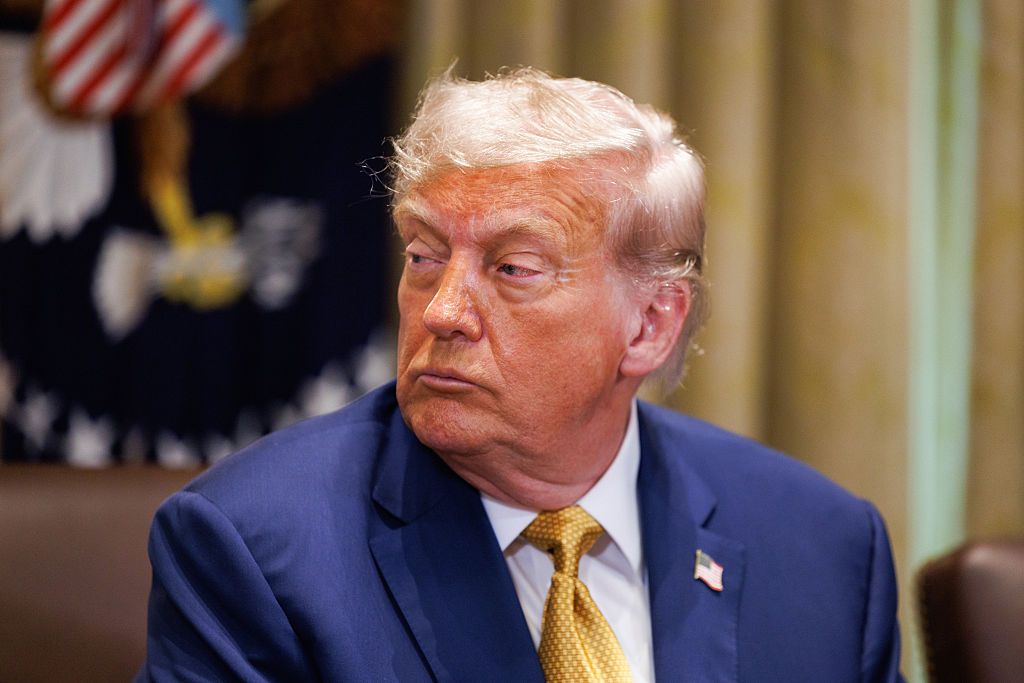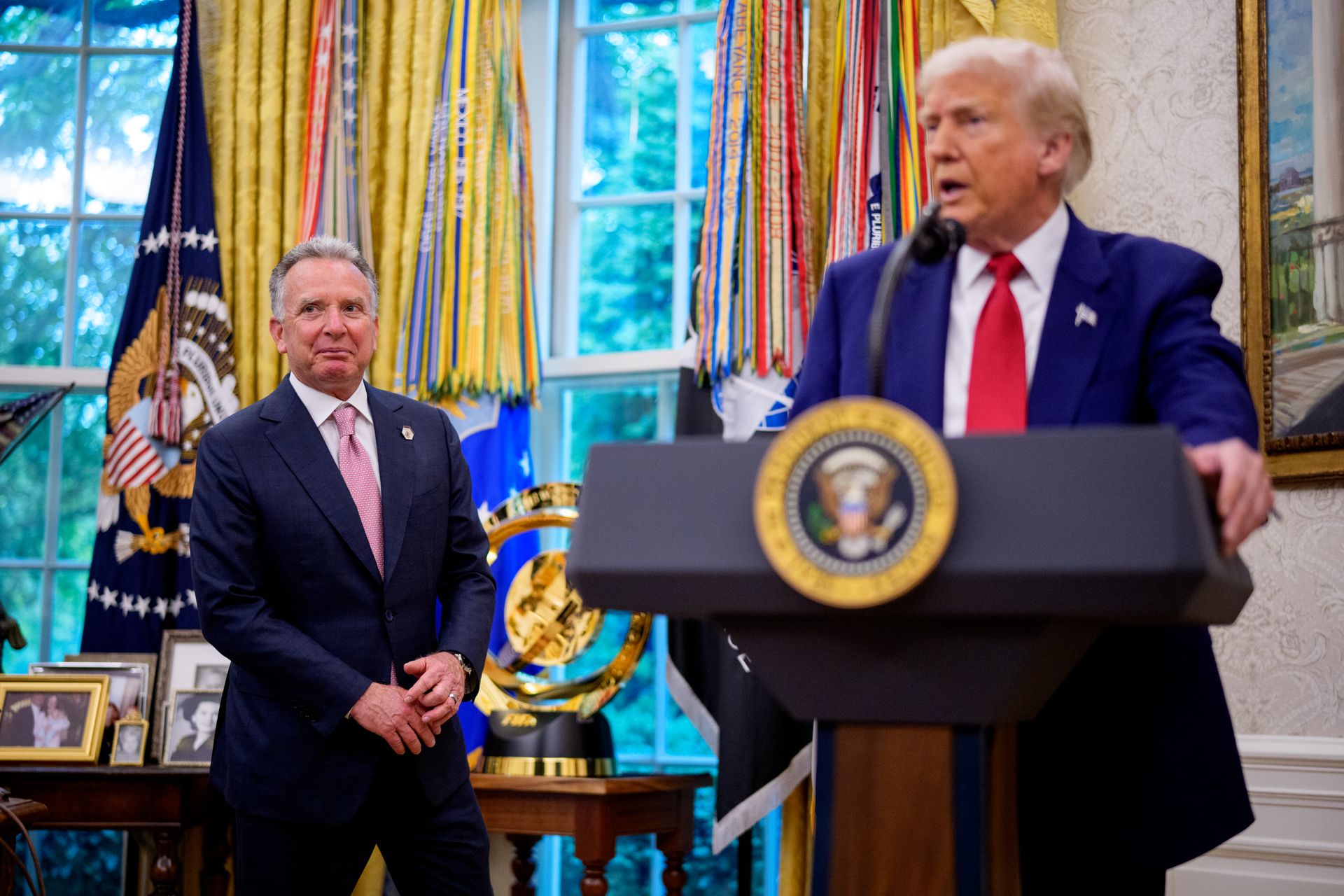
President Trump has all the cards to stop Russia’s war against Ukraine. Now, he needs to use them
U.S. President Donald Trump in Washington, D.C., U.S. on Aug. 5, 2025. (Brendan Smialowski / AFP)

Gregory P. Wilson
Former Deputy Assistant Secretary of the U.S. Treasury Department
President Trump announced on July 14 that he was finally ready to provide additional weapons to Ukraine and impose new tariffs on Russia within 50 days – by Sept. 2 – if Russian President Vladimir Putin did not cease his illegal war of aggression and terror in Ukraine.
This gave Russia a blank check for 50 more days of senseless death and destruction. No restrictions were imposed on Moscow as a result.
On July 28, however, Trump changed his mind and shortened his unilateral deadline. A day later, while flying home from Scotland, the president said Russia has exactly 10 days to stop its war. All eyes are now on Aug. 8.
This, so far, doesn’t seem to influence Putin, who continues to rain more missiles down on innocent Ukrainians in defiance of Trump’s feints.
Ukraine can certainly use all the military aid — defensive and offensive — it can get from the U.S. and NATO allies. Even if this means Ukraine has to buy U.S. weapons through NATO countries to maintain Ukraine’s security, as President Trump prefers and the commercial U.S.-Ukraine minerals agreement foreshadows.
However, Trump has two additional high-stakes cards to play that can not only bolster his own negotiating posture and prestige, but more importantly, help Ukraine at the same time — tougher sanctions on Russia and frozen Russian asset transfers to Ukraine.
If the president genuinely wants to end the war and negotiate from his own position of strength against the Russian dictator, then his first card to play is secondary sanctions and their strict enforcement against Russia and its allies under the International Emergency Economic Powers Act (IEEPA).
President Trump can make Putin pay severe financial penalties for his illegal war, all at no cost to U.S. taxpayers.
His second card is the new authority granted to the president by Congress last year to seize and transfer all of Russia’s frozen sovereign assets sitting idle in the U.S. financial system. He can start with $5 billion immobilized at the Federal Reserve.
There’s no illusion that the president has high on his agenda what Congress thinks, but Trump would be fully supported by a strong pro-Ukraine majority at the other end of Pennsylvania Avenue. Despite a vocal minority of GOP Isolationists, demonstrable congressional support for Ukraine remains despite three plus years of war and war fatigue.

On secondary sanctions, Senator Lindsey Graham (R-SC) and Senator Richard Blumenthal (D-CT) introduced the bipartisan Sanctioning Russia Act on April 1. It now has 83 co-sponsors in the 100-member Senate. Trump has flirted with endorsing it, but Senate Majority Leader John Thune (R-SD) won’t allow a vote without Trump’s blessing in advance. A companion bill exists in the House, introduced by Brian Fitzpatrick (R-PA) and Mike Quigley (D-IL), which to date has 88 bipartisan co-sponsors.
Russia’s war on Ukraine is being bankrolled by its fossil fuel exports, which have brought in nearly $1 trillion since 2022, with $200 billion expected in 2025 alone. The Kremlin continues to funnel about half of that income — some $500 billion — into its military. As long as the energy money keeps flowing, so will the war.
The troubling part is where that money comes from. China buys about 40% of Russia’s fossil fuels, making it a key enabler, while India takes another 25%, mostly crude and coal. Ending this cycle means cutting off the cash. It’s now up to President Trump to exercise his love for tariffs for the greater good.
More recently, the House Financial Services Committee under the leadership of Chair French Hill (R-AR) passed Zack Nunn’s (R-IA) PEACE Act by the overwhelming vote of 53-1. Not only does it include targeted new secondary sanctions on foreign banks and the Russian energy sector, but it also contains an expedited process to authorize the Secretary of the Treasury to transfer frozen Russian assets in the U.S. financial system to the Ukraine Support Fund for both economic and military purposes. As much as $50 billion in Russian money here could be used to help Ukraine now.
The president has two trump cards to play by Aug. 8 if he truly wants to stop the senseless killing by negotiating for peace from a position of strength. He can use Executive Orders without waiting on Congress, but he also has strong, bipartisan Congressional support to act sooner rather than later.
Playing his two cards now can help Ukraine symbolically and substantively. President Trump can make Putin pay severe financial penalties for his illegal war, all at no cost to U.S. taxpayers.











